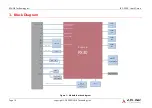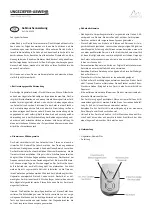
LEC-
PX30 User’s Guide
SGET SMARC Rev 2.1
Page 19
copyright © 2020 ADLINK Technology Inc.
4.2
Signal Terminology Descriptions
Meaning of the terms used for signal description tables
Term
Description
I
Input to the module
O
Output from the module
O OD
Open drain output from the module
I OD
Open drain input to the module, with mandatory PU (pull up) on module
OD
Open drain
I/O
Bi-directional Input/Output
PU
PU (pull-up) resistor on module
PD
PD (pull-down) resistor on module
VDD_IN
Main power source from carrier to module
CMOS
Logic input or output
GBE MDI
Differential analog signaling for Gigabit Media Dependent Interface
LVDS DP
Low Voltage Differential Signal for DisplayPort interface
LVDS D-PHY
Low Voltage Differential Signal for MIPI CSI-2 cameras and DSI displays
LVDS M-PHY
Low Voltage Differential Signal for MIPI CSI-3 cameras
LVDS LCD
Low Voltage Differential Signal for LCD displays
LVDS PCIE
Low Voltage Differential Signal for PCIe
LVDS SATA
Low Voltage Differential Signal for SATA
TMDS HDMI
Transition Minimized Differential Signal for HDMI displays
USB
DC coupled differential signaling for traditional (non-Superspeed) USB signals
USB SS
Differential signal for SuperSpeed USB signals
USB VBUS 5V
5V tolerant input for USB VBUS detection
3.3V
3.3V Power Domain: Active while CARRIER_PWRON is high and CARRIER_SBY# is NOT active (i.e. both signals are high)
1.8V
1.8V Power Domain: Active while CARRIER_PWRON is high and CARRIER_SBY# is NOT active (i.e. both signals are high)
3.3Vsb
3.3V Power Domain: Active while CARRIER_PWRON is high (regardless of CARRIER_SBY#)
1.8Vsb
1.8V Power Domain: Active while CARRIER_PWRON is high (regardless of CARRIER_SBY#)
















































